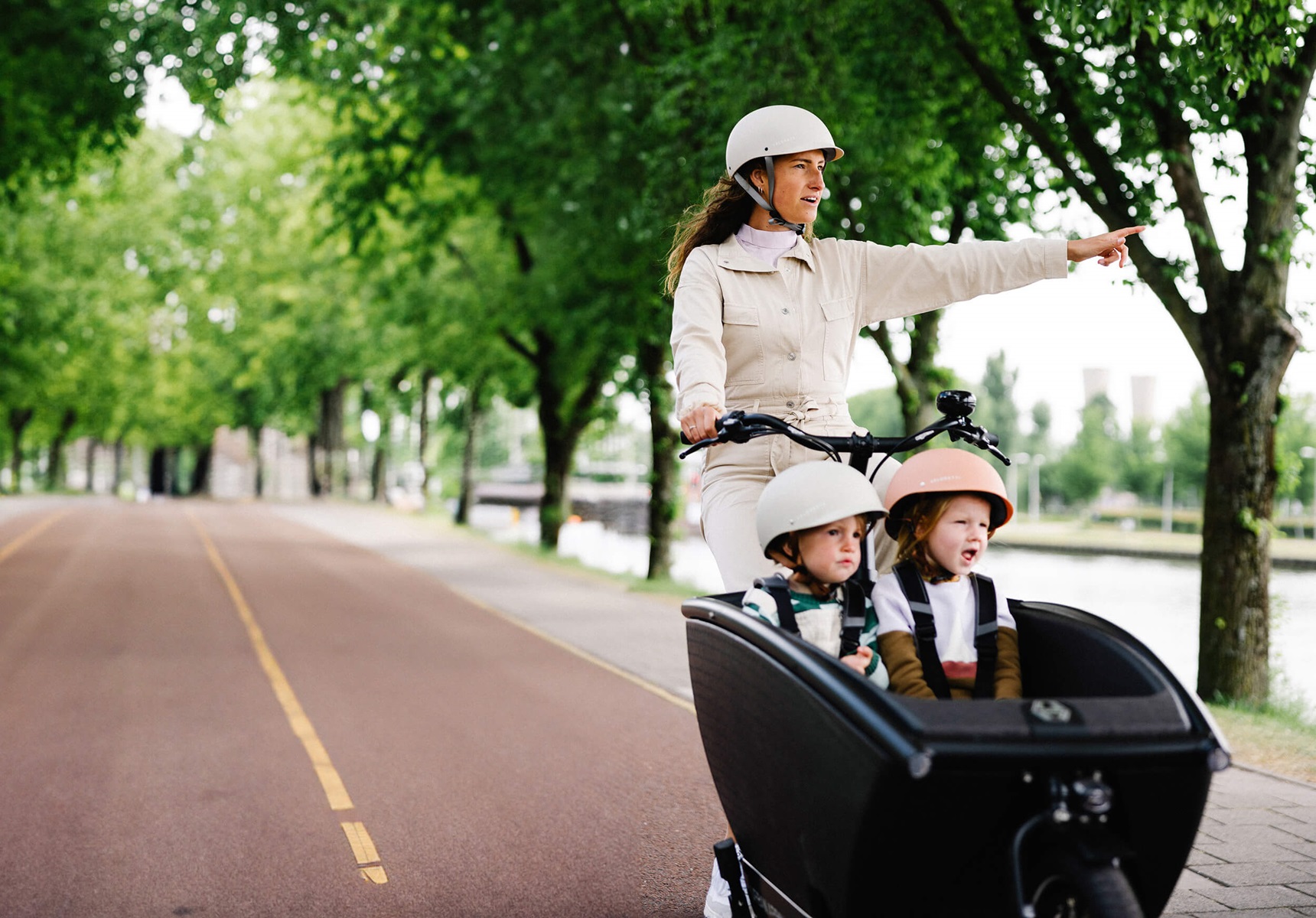

1. Communication is key
In traffic, it's all about seeing and being seen. Always make eye contact with other road users: cyclists, pedestrians, drivers, and especially truck drivers. It's essential to make sure they have noticed you. When crossing an intersection, caution is necessary; don't just proceed, but make sure you've been really seen by other road users!
2. Cycling skills
How are your cycling skills? Test yourself! Can you look behind you and extend your arm without swerving out of your lane? It’s also crucial to accurately assess the speed of the traffic around you. This helps you make quick and safe decisions while moving through traffic.
3. Watch out for blind spots
All vehicles, such as cars and especially trucks and buses, don't have 360° vision, so always stay alert for blind spots! These dangerous zones are found at the front, rear, and sides of trucks. Never assume that the driver can see you, because the area where a cyclist is visible is only in a few small zones, often at some distance from the driver's cabin.
Here are some basic rules for blind spots:
4. Choose the safest route
Whenever possible, opt for bike-friendly roads or routes with less traffic and well-maintained bike paths. Avoid busy intersections or roads with many trucks, especially during peak hours. By consciously choosing your route, you can significantly improve your safety.
5. Is your bike -and clothing- in order?
A safe bike ride starts with a bike that's in top technical condition. Tires with good pressure, a bell that's loud enough, a chain or belt that's properly tensioned, and brakes that work well – these are all very important. For example, you should always be able to make an emergency stop, which is impossible with poorly functioning brakes.
Also, don't forget your visibility in traffic. On public roads, your bike lights should always be in working order. Wearing a fluorescent vest or trousers also makes you more visible in rain, fog, or snow, especially as the days start getting shorter!